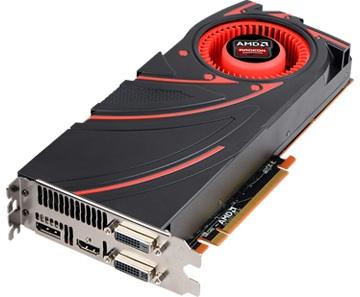October 31, 2013

The video card wars are heating up once again between NVIDIA and AMD, with no signs of slowing anytime soon. This rivalry has been going on for the better part of two decades. However, there have been brief periods of one-sidedness over those decades -- the last being a few years ago when NViDIA released its GTX 600 series line that shattered AMD's HD 7000 series cards in raw video game power. Soon after, NVIDIA launched its GTX 700 series (including the Titan), AMD, the "red team," fired back with the R7 and R9 series of video cards that have nearly dominated the market at almost any price point over the "green machine."
AMD's R9 290X is on par with NVIDIA's GTX 780, and in some benchmarks is neck and neck with the company's performance beast, the Titan. However, AMD's flagship sails far ahead, costing significantly less than the competition at roughly $550, versus $1,000. While these cards have been designed and manufactured for gaming purposes, there is a little talk about added bonus. Gaming cards are topping the application-based benchmarks at a low dollar value.

Both companies offer workstation solutions that are designed for CAD and other rendering tasks (AMD's FirePro series and NVIDIA's Quadro line, respectively). These cards are costly (priced anywhere between $3,000 and $5,000), but they do offer a surprising amount of punch when it comes to gaming (when compared to their gaming counterparts). Unfortunately, the same cannot be said about using gaming cards used for professional applications -- at least that used to be the consensus.
In yet another surprising twist, AMD's R9 290X series cards were recently put to the test against both professional and gaming offerings from both companies' current and previous line of cards in a series of benchmark trials. The outcome was indeed surprising in both 2D and 3D applications, with the R9 card coming within spitting distance to NVIDIA's Quadro K4000.
Since 2D CAD isn't very demanding in pushing the pixels, almost every card (gaming or professional) released in recent years can handle that particular workload with relative ease. Of course, that story changed when the same cards were tested in 3D applications using the same Cadalyst 2012 (AutoCAD-based) benchmark. Gaming cards benefit greatly when using the DirectX platform, which is prominent in some CAD applications such as Autodesk and Inventor.
The results in this category placed NVIDIA's GTX 690 (dual-GPU card) at the top, beating both company's professional line of cards, as well as the R9 290X, which hovered in the middle of the result list. When subjected to the Inventor benchmark, the tables were turned with AMD's HD 7990 reigning over all others, including NVIDIA's GTX 690 (with the R9 290X hovering only a few rungs below the 7990), as well as over the professional line of cards, which seems rather odd since they were designed just for this purpose.
The gaming card party came to a crashing halt as OpenGL-based benchmarks were used. Testing using Maya 2013 and Lightwave animation and production benchmarks showed the professional-based cards to take the crown with NVIDIA's Quadro K5000 and AMD's Firepro W9000 coming in at first and second, respectively. Strangely enough, the R9 290X still had game, hovering in the middle of the pack running both benchmarks. Why the gaming series cards beat out the professional-grade offerings (and vice-versa) is no secret. It was due to the different drivers optimized for each platform, even though the cards may use the same architecture. Still, the numbers do not lie. Gaming-based cards can, and have been used in workstations just fine without the need to spend thousands of dollars.
The distinctions between the two are consistently becoming blurred as new card designs are released to the market. AMD's new R9 series exemplifies this notion. Those looking for a decent workstation card that can handle gaming, will do well to give AMD's new card line a look.
Related posts:
About the Author(s)
You May Also Like





